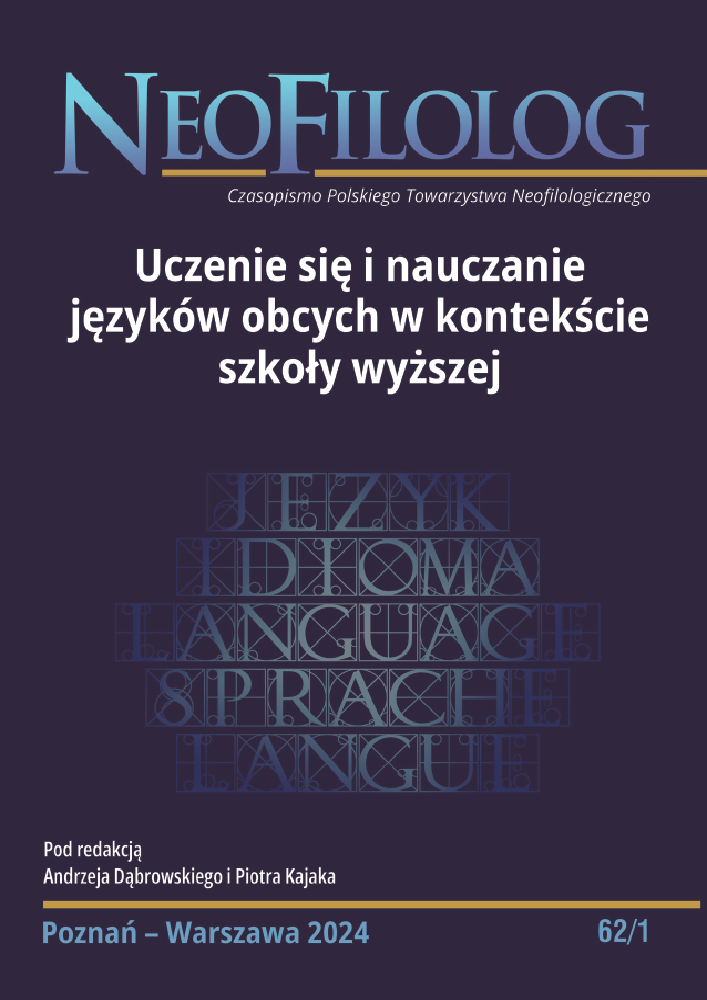No. 62/1 (2024)
Published 2024 April 12
Foreign language learning and teaching at tertiary-level education
pod redakcją Andrzeja Dąbrowskiego i Piotra Kajaka
Full Issue
PDF (Język Polski)
Introduction
Articles
9-23
24-42
61-77
78-104
105-122
123-138
139-154
155-169
170-191
192-212
213-229
230-248
249-262
263-284
285-295
296-311
312-332
